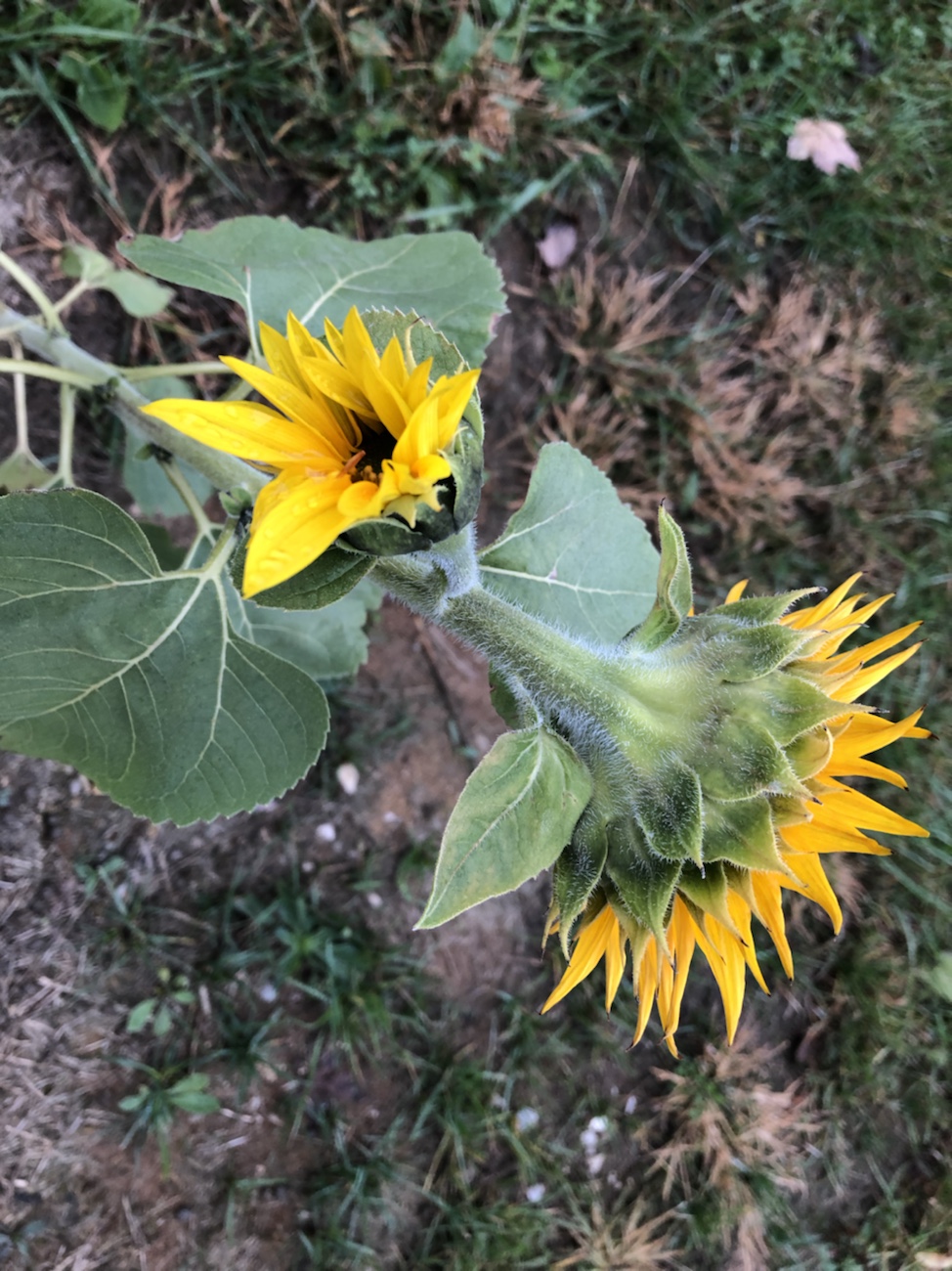
While it seems to have taken longer than usual, it’s like a switch has been flipped and the foliage is turning color. We’ve had a couple of beautiful fall days, with frost riming the grass in the morning and the kind of azure skies that only seem to appear at this time of year. Autumn’s beauty is spellbinding – and worthy of appreciation.
The burning bushes are in full color now: bright scarlet, with matching berries. I saw a cardinal (also vibrant crimson) eating some of the berries and it reminded me that the wild animals are preparing for winter. With snow already in the forecast for our area, it seems like the Farmer’s Almanac may have the edge over the Old Farmer’s Almanac’s forecast for a mild and wet winter…but we won’t know until we know, right?
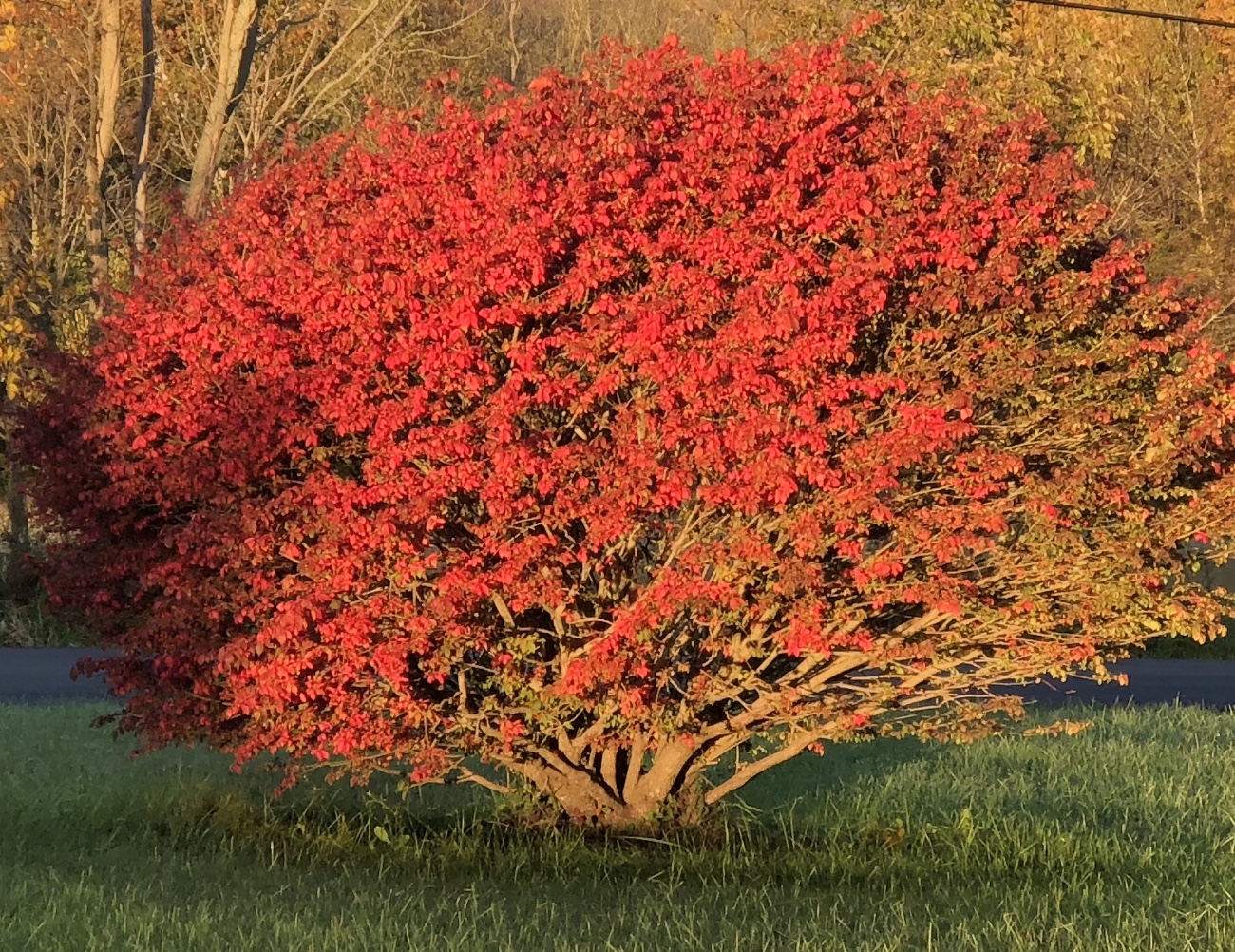
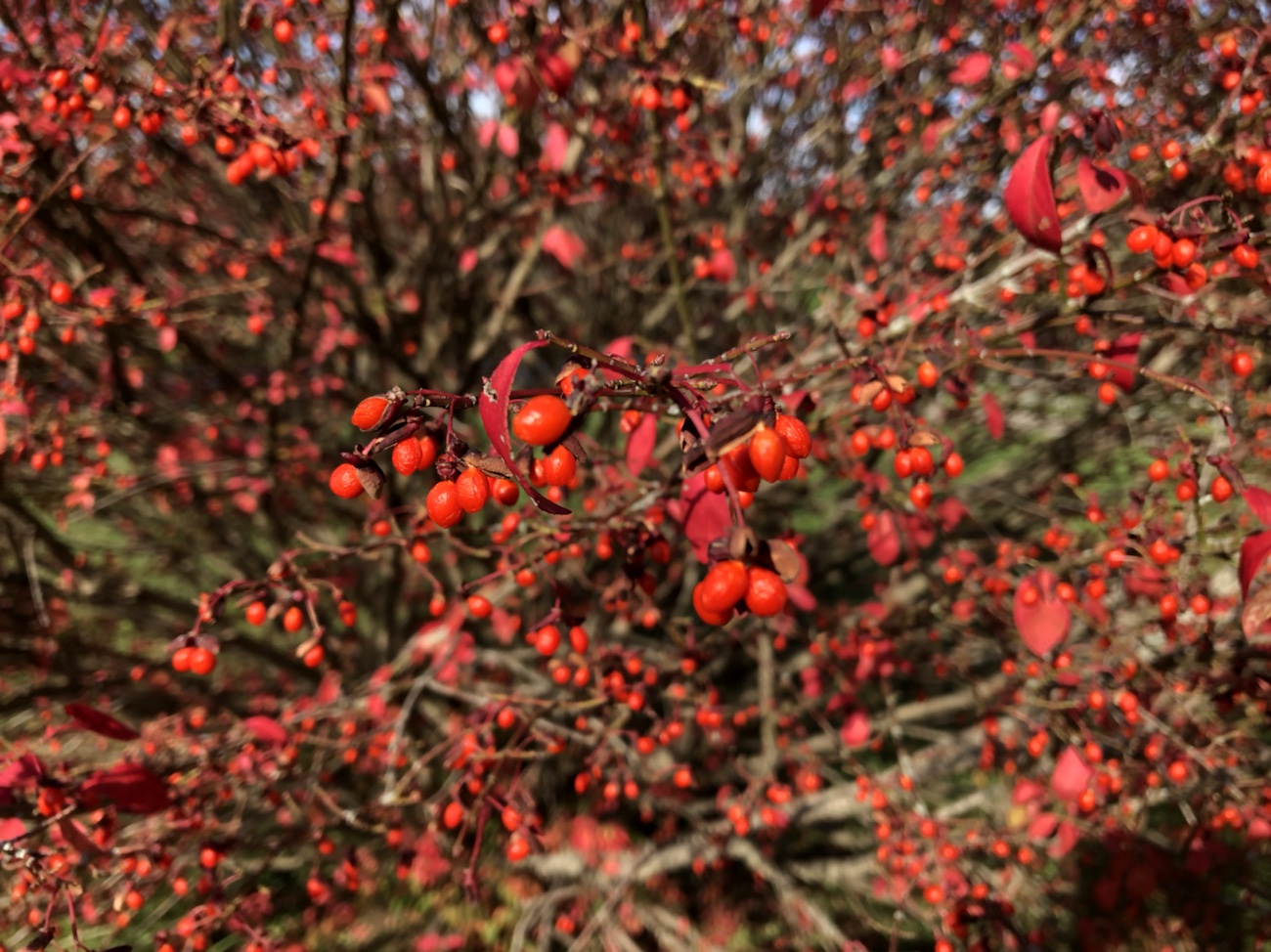
One of the volunteer sunflowers went to seed and I harvested it so that I could save some of the seeds to plant later. Some animal had already taken a bite from it! The rabbits enjoyed the stalk and leaves, so nothing went to waste. Another late-growing volunteer is determined to go to seed, and I marvel at its resilience. It’s another multi-head black oil sunflower, and the two heads at the top have already opened. I’m keeping my fingers crossed that the seeds will mature before the cold kills the plant; sunflowers are not frost-tolerant, so while the late summer warmth allowed it to germinate, it’s fighting an uphill battle to reach maturity with these chilly temperatures.
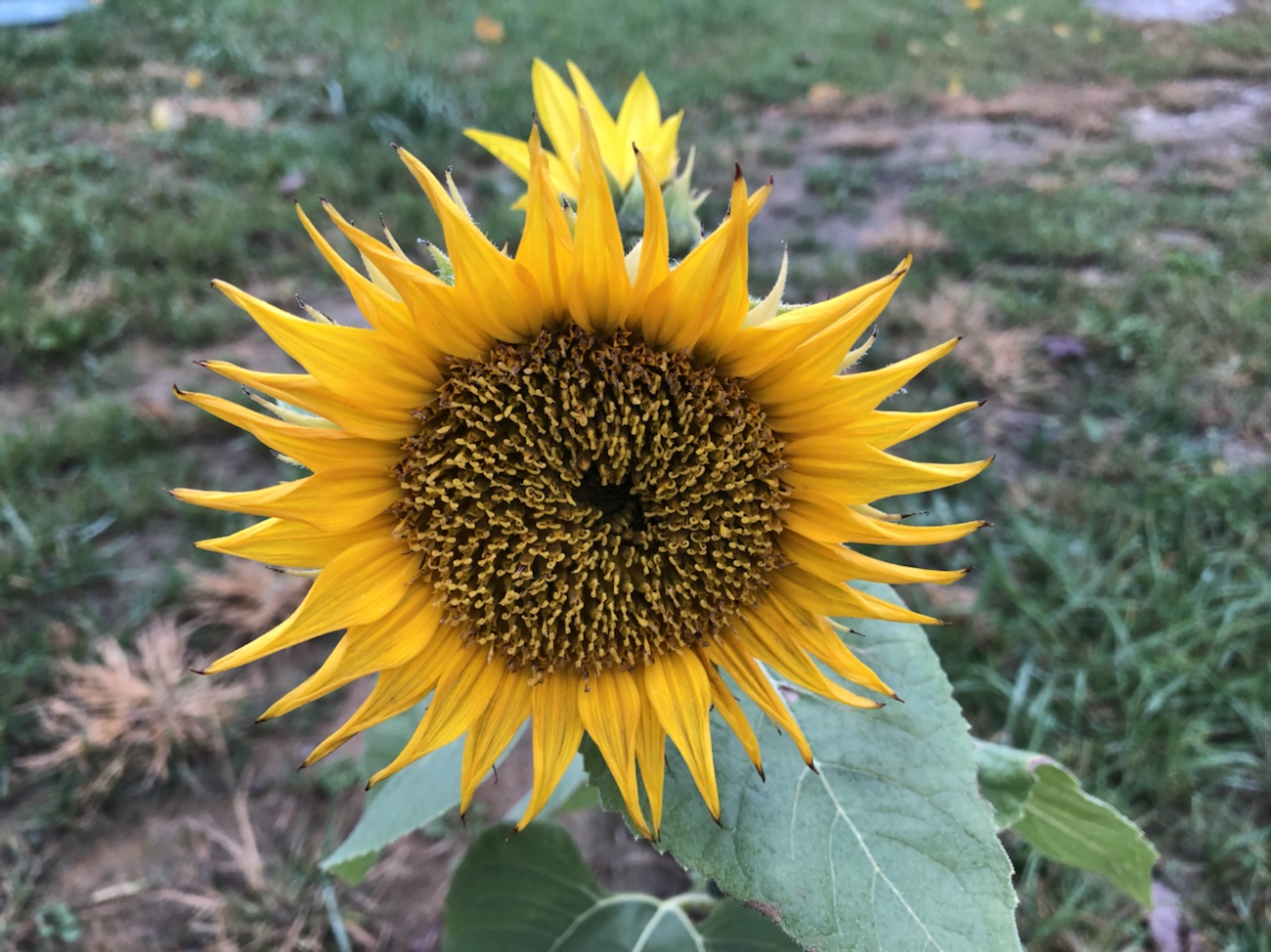
The leaves of the tulip poplar tree, which remained green for longer than normal, seemed to change to yellow and fall off overnight. The grass is littered with the large, tulip-shaped leaves now.
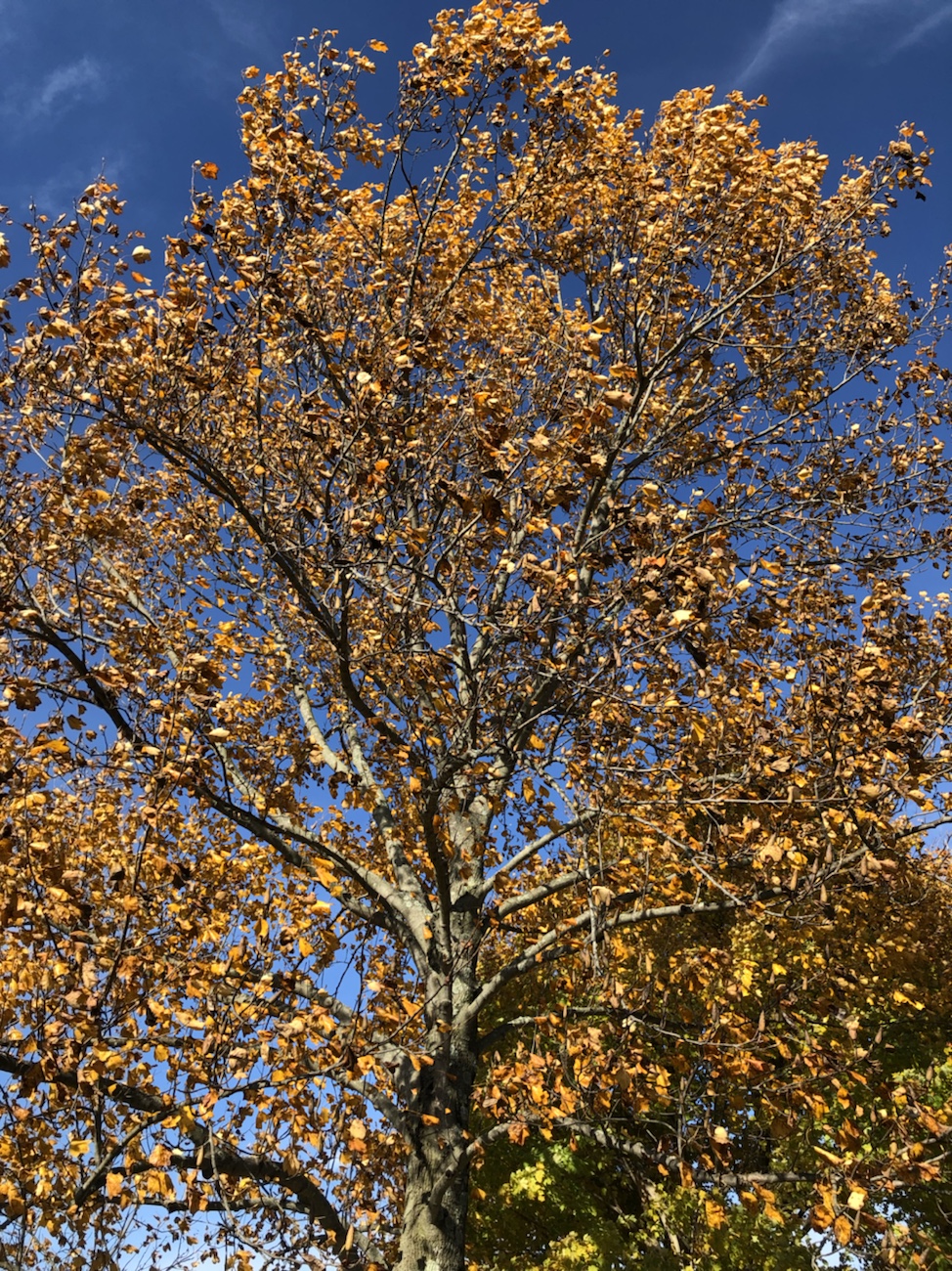
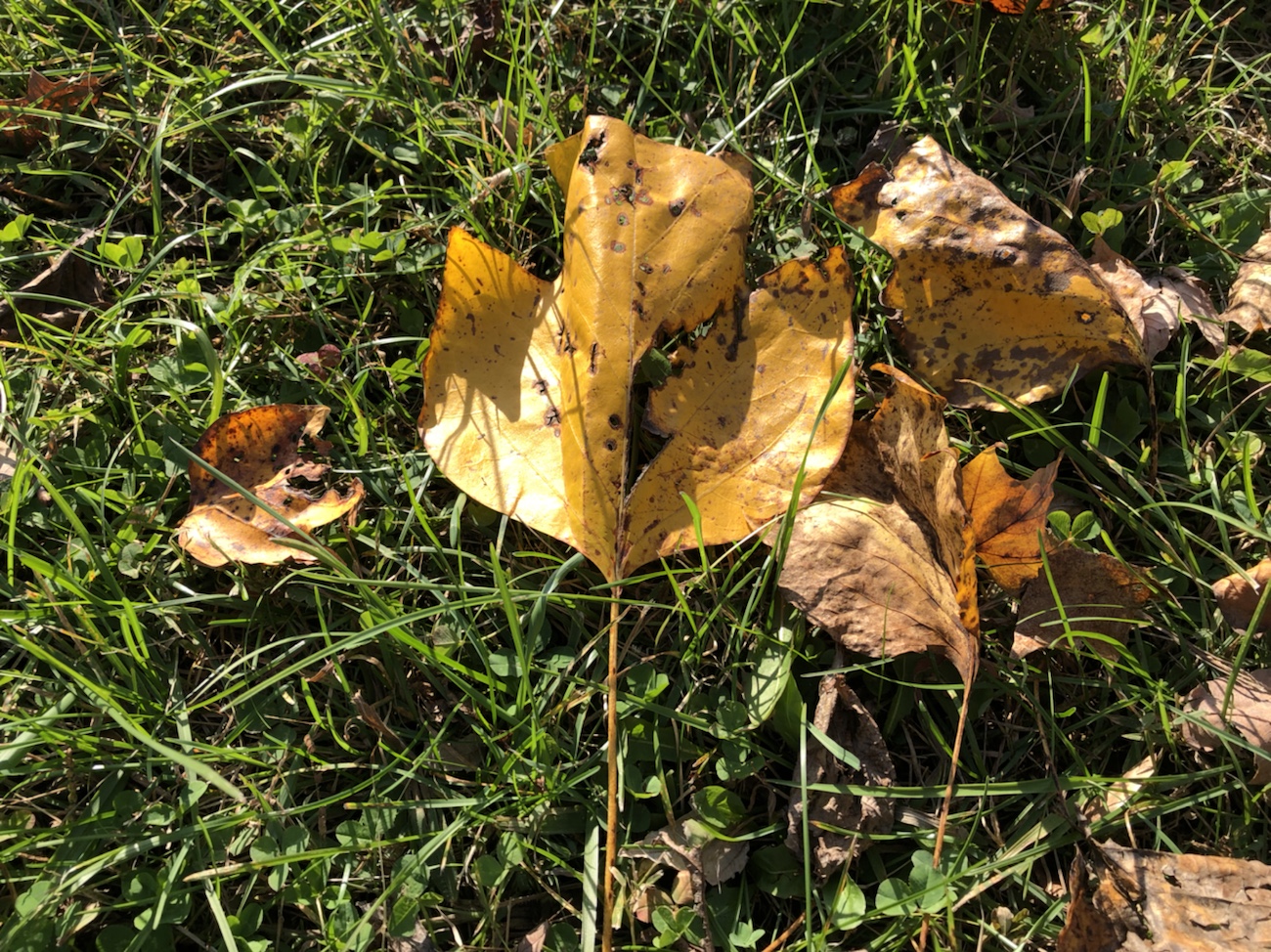
Other trees sporting colors, including pines:
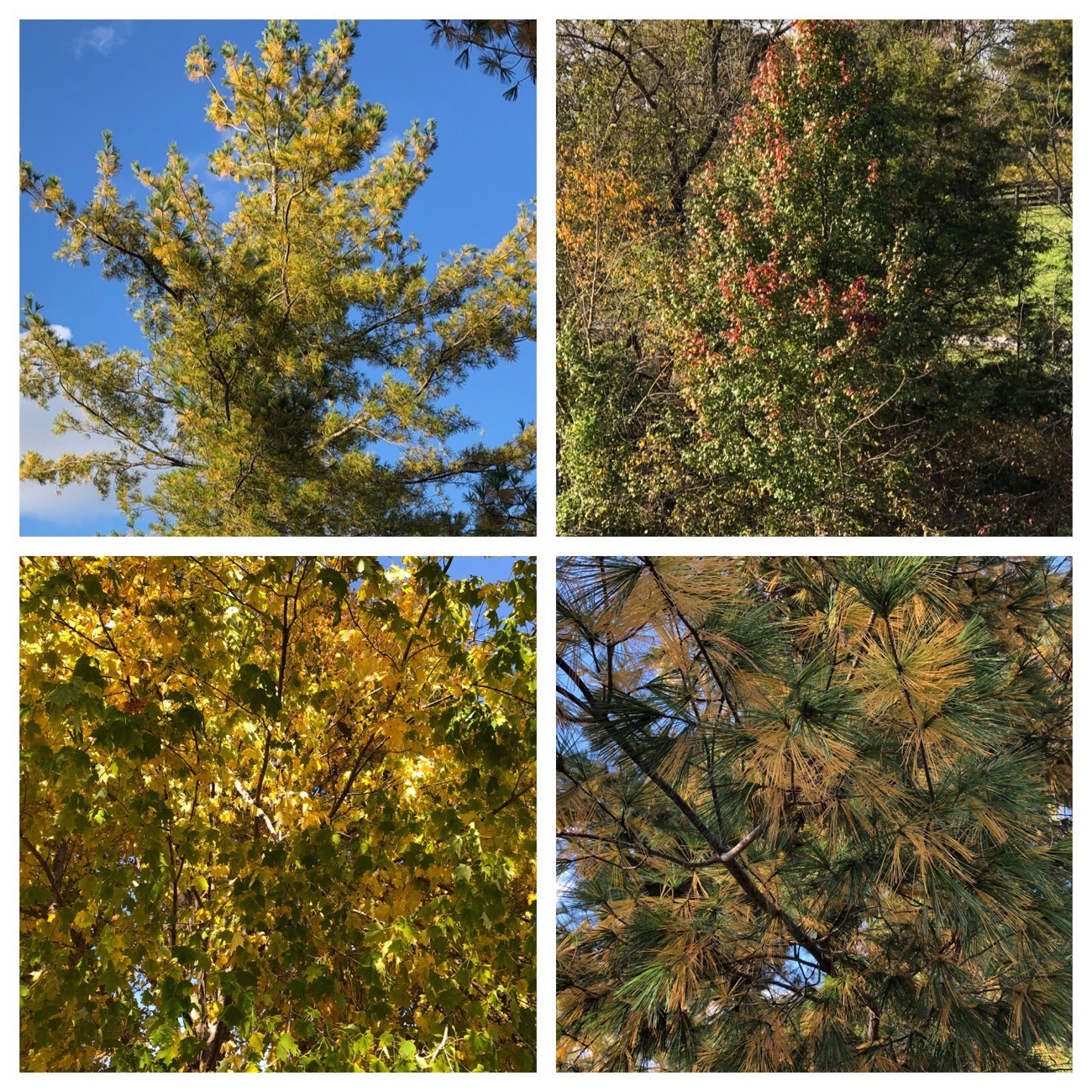
The maples growing near the poplar have also changed color and dropped their leaves – and one of the trees harbored an interesting surprise: I noticed some strange geometric shapes (hexagonal, pentagonal, and rectangular) on the underside of one of the branches and wondered if it was something artificial someone had stuck on the branch. It definitely did not look naturally-occurring, at all. It turned out to be exquisitely natural, though – researching it online, we discovered that these formations are clusters of wheel bug eggs! And in the spring, the nymphs will hatch and grow into the prehistoric-looking predators we know.

The wonders of nature never cease to amaze. It inspired me to write a little poem:
Each fallen leaf, a reminder: Autumn is a bridge Between the verdancy of summer And the austerity of winter.
Enjoy this season, short as it may be (doesn’t it seem to be getting shorter each year?). And we’ll keep rooting for the determined sunflower!
